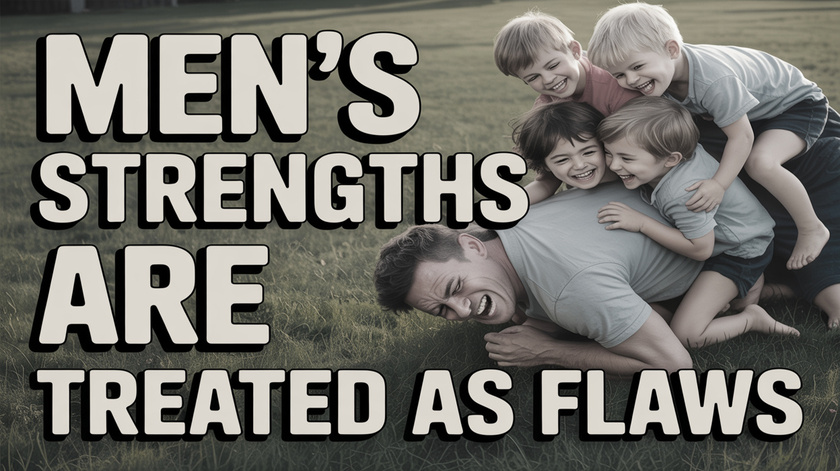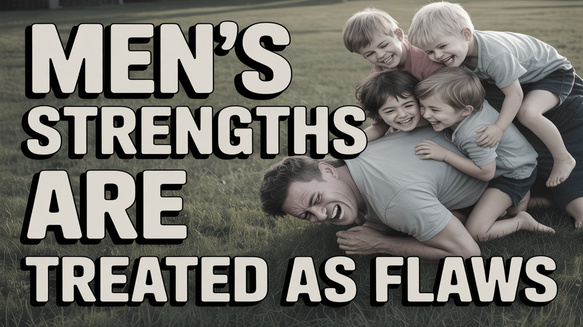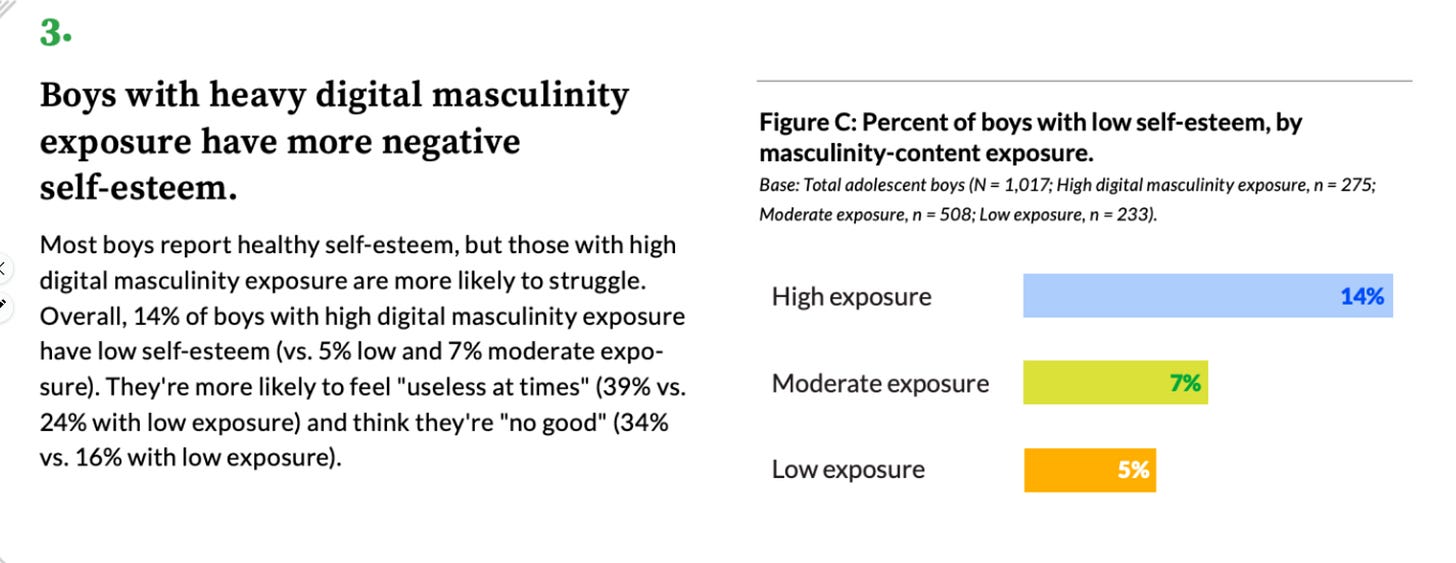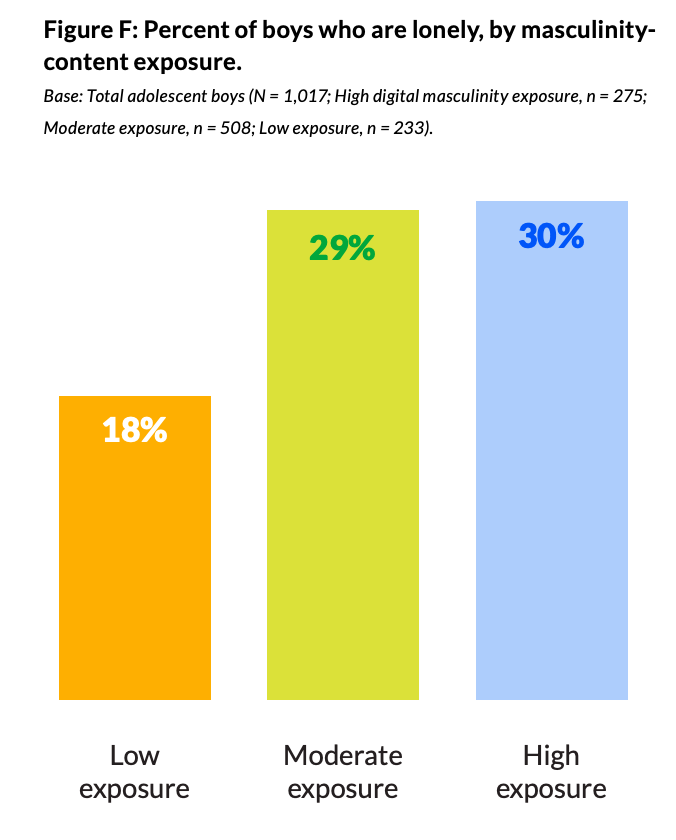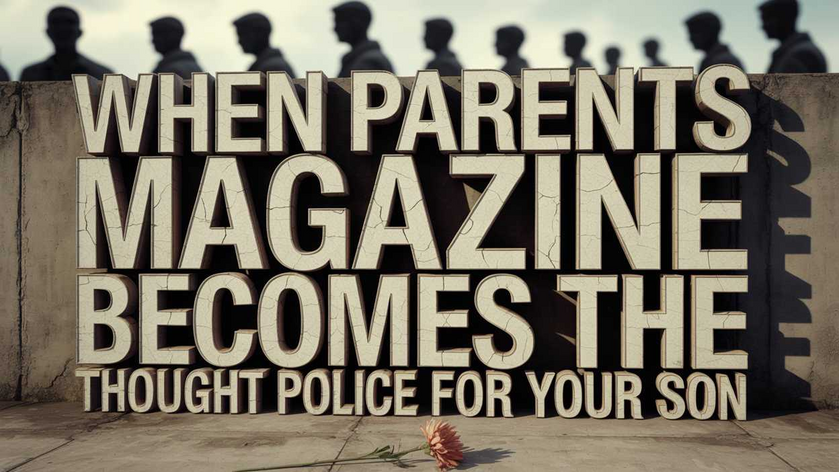
A recent Parents Magazine article titled “Why Parents Need to Intervene if They Suspect Their Son Has Been 'Redpilled’” reads less like parenting advice and more like an ideological manifesto disguised as concern.
The article warns parents to watch their sons for signs of dangerous thinking—ideas that stem from online “redpill” communities. And it’s not subtle. The message is clear: if your son starts to express dissatisfaction with how boys and men are treated, or questions feminist narratives, he might need therapy.
Let that sink in.
This isn’t about helping boys grow or feel understood. It’s about ensuring they fall into line.
Pathologizing Male Discomfort
What’s most striking is the way the article pathologizes normal adolescent male experiences—confusion, loneliness, rejection, and the search for identity. These are treated not as universal parts of growing up but as warning signs of radicalization if a boy dares to voice his struggle in ways that don’t align with feminist-approved language.
Redpill spaces—imperfect as they may be—often give voice to young men who feel overlooked, disposable, or shamed simply for being male. Instead of asking why these boys feel this way, Parents Magazine jumps straight to suspicion and correction.
They don’t want to understand these boys. They want to fix them.
Guilt by Association: The Lazy Smear
The article swiftly lumps together a wide spectrum of online male spaces—men’s rights advocates, redpill communities, incels, and even white supremacists—as if they’re all cut from the same cloth. It’s the rhetorical equivalent of saying, “some people who criticize the government are also terrorists, so be careful if your son starts quoting the Constitution.”
Yes, there are toxic corners of the internet. But equating a boy's frustration with dating or school with hate speech is not only intellectually lazy—it’s deeply unfair. It leaves no room for boys to ask difficult questions, process complex feelings, or explore their beliefs without being branded dangerous.
Empathy for Girls, Surveillance for Boys
We live in a time when girls are encouraged to express their truth—no matter how raw or angry. We validate their pain, amplify their voices, and support their right to be heard.
But when boys do the same?
We monitor them. We guide them toward “better role models.” We dissect their vocabulary for terms like “alpha” or “incel” as if they’re signs of infection. We assume they’ve been duped by online influencers instead of recognizing that their discontent might come from real experiences in a society that often treats them as second-class.
The double standard couldn’t be clearer: girls are encouraged to find themselves. Boys are expected to correct themselves.
Redpill or Reality?
The core idea behind redpill thinking is that the world isn’t quite how it’s been presented—that we’ve been sold comforting illusions that don’t match the lived reality of many men. You don’t have to agree with every tenet of redpill ideology to acknowledge that some of its core concerns resonate because they’re true:
Boys fall behind in school, but no national campaign addresses it.
Male suicide and homelessness rates dwarf those of women.
In family courts, men are routinely treated as afterthoughts.
In dating and media, men are often mocked, shamed, or portrayed as villains.
These issues aren’t the fever dreams of angry young men. They’re documented facts. And yet, Parents Magazine would prefer that boys stay silent—or at least stay within the ideological boundaries set for them.
“Helping” Boys By Controlling Them
The article pretends to care about boys’ well-being, but what it actually cares about is compliance.
It encourages parents to offer “healthier alternatives”—defined, of course, as perspectives aligned with mainstream feminist values. It recommends offering boys content that shows “there’s more than one way to be a man,” but it never entertains the idea that strength, stoicism, competition, or male solidarity might be valid and valuable.
Instead, boys are instructed to show vulnerability, question traditional masculinity, and lean into cooperation. All fine in moderation—but only if boys get to choose it, not have it spoon-fed as the only acceptable option.
What This Article Really Reveals
This isn’t just a bad take by one publication. It’s a symptom of a broader cultural discomfort with male autonomy.
The idea of boys finding their own path—one that doesn’t involve shame, ideological obedience, or deferring to feminist narratives—is threatening to a system that depends on men staying quiet and compliant.
Articles like this one don’t help boys. They train parents to fear them, to police their thoughts, and to steer them away from anything that might challenge the status quo.
And that’s the real danger.
A Better Approach: Listening Without Judging
If a boy in your life starts exploring redpill content, don’t panic. Don’t treat him like he’s broken. Instead, ask him why it resonates. What’s he struggling with? What has he seen or experienced that made him feel this way? What does he believe about fairness, relationships, and his own value?
Start with empathy—not ideology.
The real red pill is about seeing what most of our culture refuses to see:
Boys are struggling. Not because they’re fragile. Not because they’re hateful. But because they’ve been silenced, sidelined, and told to apologize for existing.
And some of them are just beginning to wake up.
Men and Boys Are Good.




